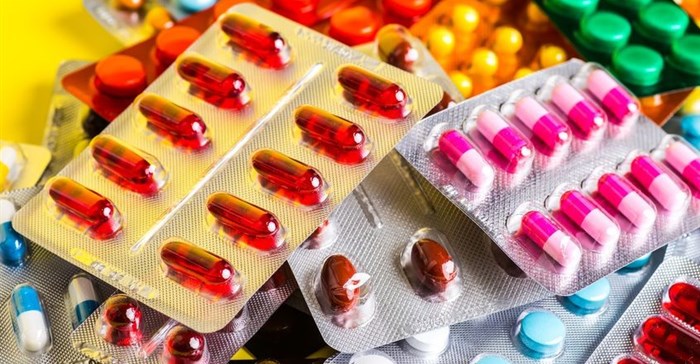Although the threat of antibiotic resistance is well-documented, global use has increased by 39% between 2000 and 2015, especially in low-income and middle-income countries (LMICs) including South Africa.
A new study by the Center for Disease Dynamics, Economics & Policy (CDDEP), Princeton University, ETH Zurich and the University of Antwerp analysed human antibiotic consumption in 76 countries and found it has increased worldwide from 11.3 to 15.7 defined daily doses (DDDs) per 1,000 inhabitants per day between 2000 and 2015.
In addition, when antibiotic resistance emerges in one place, it quickly spreads to other parts of the world. The study underscores the need for consistent global surveillance of antibiotic resistance and policies to curtail unnecessary antibiotic usage.
Driven by consumption
Loss of effective antibiotics is driven in large part by antibiotic consumption, most of which is inappropriate and does nothing to improve health. However, while reducing antibiotic use is critical, increasing access to antibiotics in lower-income countries is also necessary, as these countries suffer from the highest rates of illness and death caused by infectious disease, the study researchers pointed out.
Quadruple drug-resistant disease burden
“South Africa has a unique challenge in that it suffers from a quadruple burden of drug resistant infectious diseases; HIV, tuberculosis, malaria and antimicrobial resistance,” says Dr Yogan Pillay, acting director general for the South African National Department of Health. “Balancing access to life-saving antibiotics whilst curbing inappropriate use are daily challenges in our healthcare settings.”
“South Africa’s levels of antibiotic use are sky-high, with almost 100% increase between 2000-2015 and this is the driving force behind the devastating increase in common bacterial infections that are resistant to the antibiotics in this country,” says Professor Marc Mendelson, chair of the Ministerial Advisory Committee on Antimicrobial Resistance for South Africa.
“Turning the tide on resistance will require partnership between all members of the public, prescribers and the government to change our behaviour. Withholding antibiotics for symptoms and illnesses where they are not needed, coupled with reducing the need for an antibiotic in the first place by vaccinating our children, improving access to clean water and safe sanitation and ensuring good hand hygiene in our health care facilities and in the home, are major interventions that we all need to share in,”
Major study findings include:
- Total global use of antibiotics in humans was estimated to be 35 billion DDDs in 2015, a 65% increase from 2000, while the consumption rate increased 39 percent, from 11.3 to 15.7 DDDs per 1,000 inhabitants per day.
- Antibiotic use in LMICs increased 114% in total and 77% per 1,000 inhabitants per day between 2000 and 2015 (some of total use increase was due to population growth). Some LMICs had rates of consumption that surpassed those of high-income countries. However, many LMICs still have considerably lower per capita consumption rates than high-income countries, due to access issues such as the high cost of drugs and patent protections.
- In South Africa, consumption has increased by 99,5% in total with the DDDs per 1000 inhabitants in 2015 ranking amongst that of other HICs reflecting on the increasing access to antibiotics provided by the strengthening of the health care systems in both the public and private sectors.
- Between 2005 and 2015, South Africa’s antibiotic consumption increased from 12 to 25 DDDs per 1000 inhabitants per day compared with an increase of 7,9 to 13,5 in India.
- The consumption rate of broad-spectrum penicillins, the most commonly consumed class of antibiotics, increased 36% between 2000 and 2015 globally. The greatest increase was in LMICs, where the rate of antibiotic consumption increased 56%, compared to 15%in high-income countries.
- The consumption rate of broad-spectrum penicillins in South Africa increased 124% between 2005 and 2015 as did use of tetracyclines (185%) and trimethoprim (87%).
- Consumption of new and last-resort antibiotic classes, such as linezolid, carbapenems, and colistin, increased significantly in nearly all countries. The United States remained one of the largest consumers of glycylcyclines (tigecycline) and oxazolidinones (linezolid), although use of these newer drugs in other countries use has surpassed that of the US in recent years.
- South Africa’s use of last resort antibiotics such as carbapenems has increased by 336% over the 10 years.
- Consumption increases in LMICs like South Africa were driven largely by economic growth which provide access to more antibiotics plus increasing urbanisation which facilitates the transmission of infectious disease thereby increasing the burden of conditions requiring antibiotic treatment, a pattern not seen in high-income countries.
Lessons to be learned
Despite the rising rates of antibiotic use worldwide, the results suggest that reducing antibiotic consumption is possible. Consumption in high-income countries actually fell slightly over the study period. In addition, the considerable variation in per capita use across high-income countries suggests that there are lessons to be learned.
CDDEP director and study co-author Ramanan Laxminarayan noted that more than a year has passed since the United Nations General Assembly recognised the global threat of antibiotic resistance, yet little action has been taken since then.
“We must act decisively and we must act now, in a comprehensive manner, to preserve antibiotic effectiveness,” he said. “That includes making solutions that reduce consumption, such as vaccines or infrastructure improvements, a major plank of efforts to combat antibiotic resistance, particularly in low-income and middle-income countries that need access to these drugs.”





































